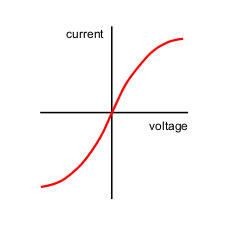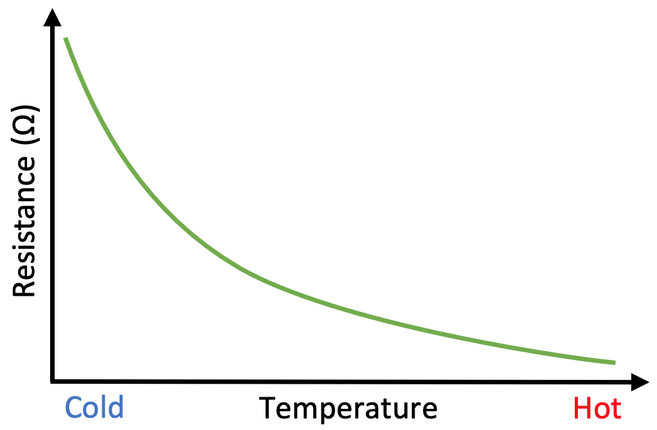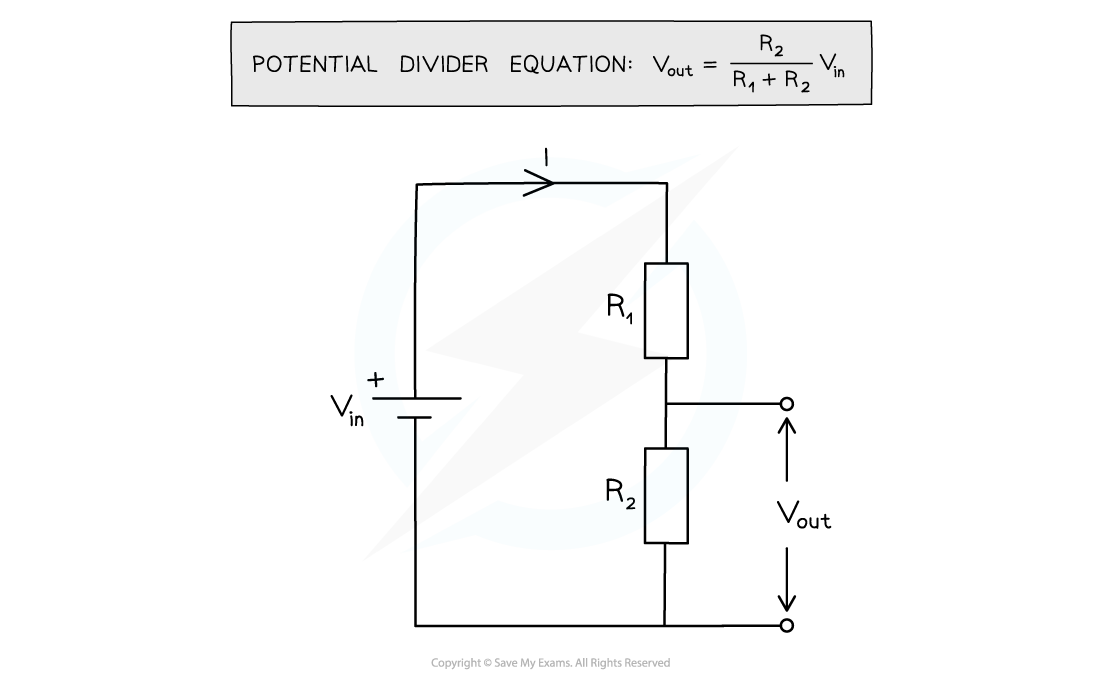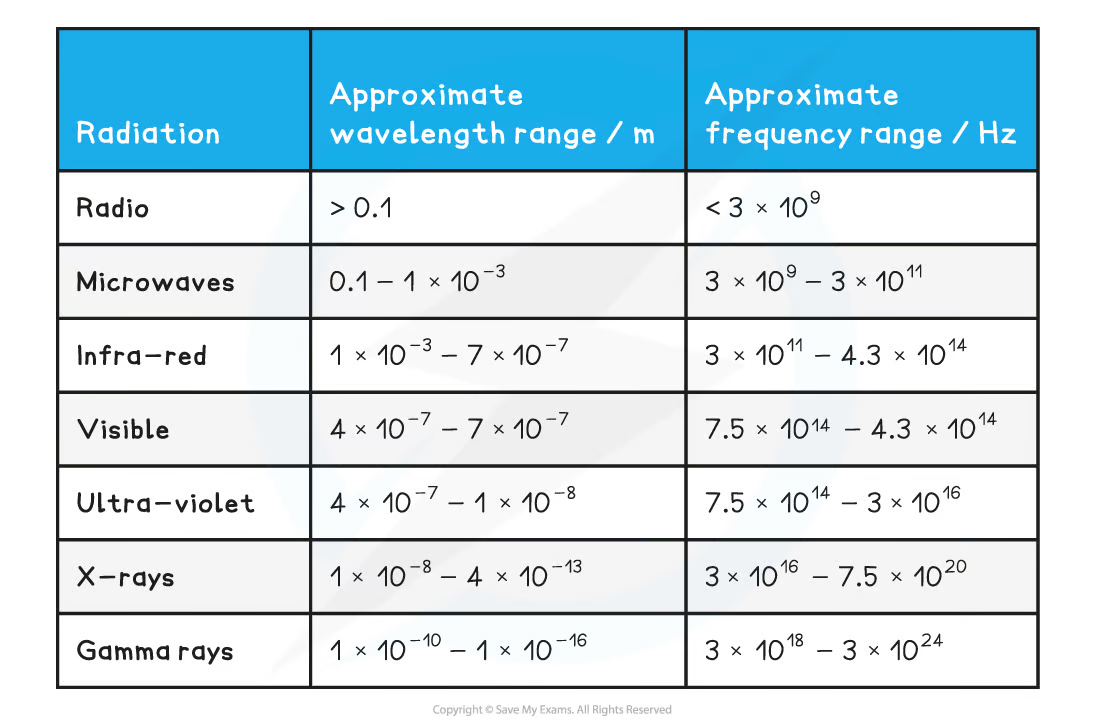P2 - Electrons, waves and photons
1/132
There's no tags or description
Looks like no tags are added yet.
Name | Mastery | Learn | Test | Matching | Spaced |
|---|
No study sessions yet.
133 Terms
variable resistor circuit symbol

Fuse circuit symbol

heater symbol

thermistor symbol

diode symbol

LED symbol

Light dependent resistor symbol

direction of conventional current
positive to negative terminal
direction of electron flow in a circuit
negative to positive terminal
what causes the flow of charge in metals
the movement of delocalised electrons
charge carriers in electrolytes
positive and negative ions
which is an SI base unit: A or V
Ampere
conservation of charge and how it relates to circuits
Charges cannot be created or destroyed, charge is always conserved. Therefore the sum of the charges flowing into a circuit must equal the sum of the charges leaving them.
charge definition
a physical quantity that can be either positive or negative
what is the structure of metals
crystalline
current definition
Rate of flow of charge (Q=It)
define all symbols in I=nAve
I=current
n=Number of electrons per unit volume
A = cross sectional area
v = mean drift velocity
e= electron charge
what property determines the conductivity of a material
the number of free electrons per unit volume
e.m.f defenition
Energy gained per unit charge
P.D definition
The energy transfered per unit charge (by charges passing through a component)
1eV defintion
The energy transfered when one electron travels through a potential difference of one volt.
Ohms law
The current through a conductor is directly proportional to the potential difference across it, provided temperature is constant
defining equation for resistance
R=V/I
four factors affecting electrical resistance
The material of the wire
The length of the wire
The cross sectional area of the wire
The temperature of the wire
define and explain relationship between length of wire and resistance
length of wire and resistance are directly proportional. Because the electrons experience a smaller potential gradient as the wire gets longer. the increased length of the wire means that the voltage per metre value is lower, causing a lower drift velocity and smaller current.
define and explain relationship between cross-sectional area and resistance
Resistance and cross sectional area are incersely proportional. Because there is a bigger volume of electrons that are able to flow at the same time
define and explain relationship between temperature and resistance
as temperature increases so does cross-sectional area. The KE of the ions increases, effectively increasing there cross sectional area an making it more difficult for electrons to pass them.
description/drawing of I-V characteristics of a resistor at constant temperature
Acts according to ohms law, directly proportional. Acts in the same way regarldess of the direction of current

Description/drawing of I-V characteristics of a filament lamp
At low temperatures acts in accordance with ohms law. At higher potential differences, the gradient decreases as current increases due to an increased resistance.

Description/drawing of I-V characteristics of a diode or LED
The diode allows current to flow with a positive P.D, from positive to negative terminal. In the reverse bias direction effectively no current can pass through and it’s said to have almost infinite resistance.
useful characteristics of LEDs
Switch on instantly
Are very robust
Are very versatile
Operate with low potentials
Have a long working life
resistance of a thermisitor - draw/describe
the resistance of a negative coefficient thermistor decreases as its temperature increases

resistance of LDR - draw/describe
the resistance of an LDR decreases as the intensity of light falling on it increases

factors in a wire affecting resistivity
none, it is an intrinsic property
define symbols in resistivity
R=resistance
rho=resistivity
l=length
A = cross sectional area
the effect of temperature on resistivity
Resistivity increases as temperature increases (for most materials, especially metals)
power definition
rate of energy transfer
voltage and current of power being transferred through the national grid
Low current and high voltage, as a higher current means more energy is wasted as thermal energy.
1 kilowatt-hour (kWh)
the energy used by a 1kW device in one hour
Kirchhoffs first law
The sum of currents entering a junction in a circuit is equal to the sum of currents leaving it
where does kirchhoffs first law come from
the conservation of charge
kirchhoffs second law
In any closed loop, the sum of the e.m.f is equal to the sum of the products of the current and the resistance (sum of P.Ds
where does kirchoffs first law come from
conservation of energy
current in a series circuit
current has the same value at any point in the circuit
e.m.f. in a series circuit
the e.m.f. in the cell is equal to the sum of the potential differences across the resistors
resistance in a series circuit
The total resistance of a circuit is equal to the sum of the individual resistors
how do we derive the equation for resistors in a series circuit
we know the sum of the P.Ds across all the resistors must equal the e.m.f., and the current flowing through each resistor is equal. Using ohms law (V=IR) and given V=V1+V2+V3, therefore IRt=IR1+IR2+IR3, factorising I gives Rt=R1+R2+R3
how are ammeters connected in a circuit
in series with components
how are voltmeters connected in circuits
IN parallel with circuit components
Voltage in parallel circuits
The sum of the components P.D in each branch of a circuit is equal to the E.m.f of the cell. P.Ds in a single loop equal cells e.m.f. (Vtotal=V1=V2)
Current in a parallel circuit
the total current in a parallel circuit is the sum of the individual branch currents (Itotal=I1+I2)
the equation for resistance in parallel circuits
1/R=1/R1+1/R2+1/R3
deriving the equation for resistance in parallel circuits
we know current divides at junctions, and voltage in each branch is the same as the cell voltage
I=I1+I2+I3
V=V1=V2=V3
applying ohms law (I=V/R) to the first equation and rearranging gets V/R=V1/R1+V2/R2+V3/R3
as the Vs are equal they can be facotrised and cancelled to get 1/R=1/R1+1/R2+1/R3
potential divider circuit
uses two resistors in series to split or divide the voltage of the supply in a chosen ratio so that a chosen voltage can be provided to another device or circuit
potential divider equation

effect when output resistor in a potential divider circuit is a variable resistor (R2 is variable)
Vout will be zero when the variable resistor has a value of o and will be maximum when the variable resistor is at its maximum
effect when output resistor in a potendial divider circuit is a variable resistor
as resistance decreases as temperature increases, Vout will be lowest at higher temperatures
effect when using an LDr IN place of the output resistor in a potential divider circuit
The LDR has a high resistance when light intensity is low, this means output voltage increases in dark conditions
terminal P.D.
The potential difference recorded across the terminals of a cell
internal resistance of a source of e.m.f.
The resistance to electrical current of the materials inside. When current flows, energy is transfered to these materials, resulting in the terminal P.D dropping.
E.m.f. equation

progressive waves
waves that transfer energy away from a source
longitudinal waves
oscillations are parallel to the direction of energy transfer
transverse waves
oscillations are perpendicular to the direction of energy transfer
wavelength
The distance between two successive identical points that have the same pattern of oscillation. It is also the distance the wave travels before it repeats itself.
Period
The time taken for one complete oscillation to take place at any point
Frequency
the number of oscillations per unit time
displacement (of a wave)
the distance any part of the wave has moved from its equilibrium position
Amplitude (of a wave)
the maximum displacement
what do the axis of an oscilliscope show
Time -xaxis
Voltage - yaxis
what is the time base setting on an oscilliscope
the time taken for the dot produced to travel 1cm horizontally across the screen
how to calculate period from an oscilliscope
period=distance between peaks x time base setting
deriving v=f(lambda)
speed=distance/time
v=(lambda)/T
we know f=1/T
so v=f(lambda)
intensity word defintion
the rate at which energy is transferred from one location to another as the wave travels through space, perpendicular to the direction of travel
Intensity formula
intensity = power/area
relationship between intensity and amplitude
Intesity is proportional to amplitude squared
wavefront definition
lines of constant phase, the distance between them represents wavelength
when does refraction occur refraction
occurs when a wave moves from one material to another
what happens during refraction
the wave changes speed, and changes direction if it is not already traveling along the normal
diffraction
the spreading out of a wave after passing around an obstacle or through a gap
when is diffraction most obvious
when the wavelength of the wave is the same size as the gap its travelling through
interference
the addition of two or more waves that results in a new wave pattern
which type of em wave has the greatest frequency
gamma (most dangerous)
general wavelengths of the e.m. spectrum

which e.m wave has the longest wavelength
radio
plane-polarised wave
A wave in which the oscillations of the field and the direction of travel are confined to a single plane
polarising filter
produces plane-opolarised light by selective absorbtion of one component of the incident oscillations
Malus’ law (transmitted intensity through a polarising filter)
I=Imax cos²(theta)
what happens to the speed of a wave when it moves from a material of lower refractive index to one of higher refractive index
speed will decrease
refractive index formula
refractive index, n = (speed of light in a vacuum)/ (speed of light in the material)
snells law
n sin(theta) = constant
when can snells law be used
for a wave travelling between two different materials with different refractive indices. To find the angle of the incident or refractive rays to the normal, or the refractive index of either material
what is the refractive index of air
very close to 1
total internal reflection definition
total internal reflection occurs when the angle of refraction is greater than 90 degrees and the light is refracted along the boundary
when does total internal reflection occur
When The angle of incidence is greater than the critical angle and the incident refractive index n1 is greater than the refractive index of the material at the boundary n2
critical angle
When the angle of refraction is exactly 90° the light is refracted along the boundary
critical angle formula in booklet
sinC=1/n (when wave is travelling to boundary from air)
critical angle between two mateirals not involving air
sinC =n2/n1 where n2 is less than n1
principle of superposition
when two or more waves of the same type meet, the resultant wave is the sum of the displacement of the individual waves
interference
Interference occurs when waves overlap and their resultant displacement is the sum of the displacement of each wave